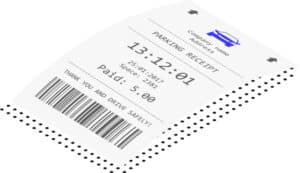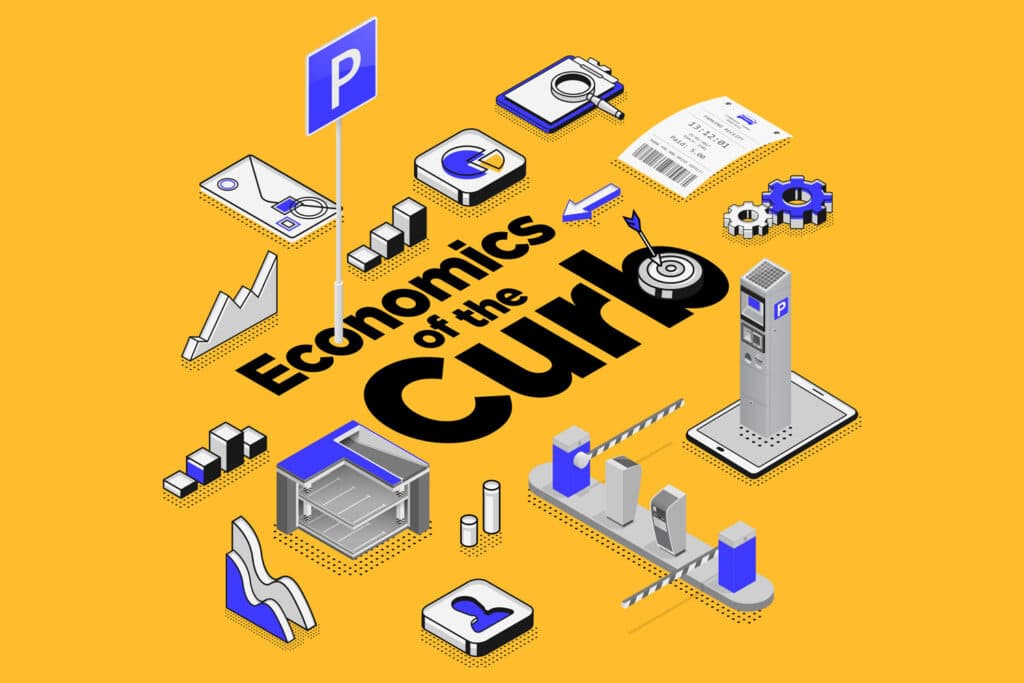
Jane thought she had done a really great job this year. As Manager of Transportation and Parking, she was responsible for several key citywide strategies which had paid dividends. So, when her performance review came around, she felt she’d knocked it out of the park.
The implementation of smart parking and transit initiatives, such as the creation of a digital inventory of all parking rules, provided citizens a better understanding about the rules – plus customer complaints and queries were down significantly.
Infringements had also decreased significantly, as citizens more clearly understood the rules and the rates of where they could park, and the consequences of non-compliance, as the fines had been increased and the detection technology improved. In fact, her team had been able to focus on community safety issues and asset maintenance given the increased compliance by citizens.
Mobile parking payment technologies had allowed people to pay their parking remotely before their initial paid time expired, further reducing their risk of a fine. It had also reduced the number of meters required on the curb.
The introduction of pick-up and drop-off zones for freight and passengers in the place of paid parking had relieved congestion in the city. The reduction in dwell time searching for parking had also contributed to an improvement in air quality, according to reports from the Chief Sustainability Officer.
Parklets and other curbside economic activity had brought more visitors to the city, and the establishment of micro mobility areas on the curb had increased the use of shared mobility-as-a-service such as e-bikes and e-scooters for last mile journeys.
While the pandemic had reduced the participation on public transit, the autonomous e-shuttle from the rail station to downtown was growing in usage week on week. Pedestrian and cycle activity had increased as more curbs and roads were pedestrianized, and secure bike parking provided on the curb.
So, imagine her surprise when her Director, Jerry Maguire*, was critical of her performance.
In fact, he was fuming. “COVID has already reduced our operating budget from reduced parking activity. I’ve got Finance breathing down my neck and notwithstanding all your activities Jane, parking and fine revenue is down by 30% on forecasts,” he said.
“How can you explain that?”
After a deep breath she replied, “Well, for one thing I hadn’t expected the behavioral change to be as rapid. I mean people have taken up mobile payment quicker than expected, and this along with digital information has made it easier for them to avoid a fine for overstaying.”
“I rather think that the reduction in fine revenue is an indication of just how well our strategies are working,” she added. “And while the removal of paid parking zones on streets to make way for other things has reduced revenue, look at the impact to other indicators like walkability, congestion, and air quality”.
“That’s all well and good,” Jerry seethed, “but who is going to SHOW ME THE MONEY? *”
Table of Contents

Increasingly, cities have sustainability measurements and outcomes connected with reduced vehicle emissions, but curb revenue is still largely dependent upon car parking, either as user-pays fees or infringement fines. Of course, fines and parking fees are important behavioral economic methods for effectively managing a city’s supply and demand of curbside space; they are also an important revenue stream for maintaining assets and investments in new transit technology.
But as trends and strategies to reduce single use private vehicles in cities continue, why can’t we have more diverse curb economics that foster a more collaborative ecosystem of benefits realization?
Factors Limiting Diverse Curb Economics
Multi-Jurisdiction Asset Ownership
The ownership of roads and curbs has long been complicated and thorny. For example, congestion busting plans that a state or federal government develops may involve the removal of paid parking spaces controlled by the city authority.
I recall when I was Deputy Secretary of an (Australian) state government transport agency, an element in the congestion strategy was the removal of 18 parking meters along a key arterial. As the roads and parking meters belonged to the city, and the revenue loss would affect their budgets, this was not an easy, nor inexpensive negotiation.
The question of ‘who pays?’ arises and where the value is created has led to protracted and often thwarted traffic management. While the federal or state government quite rightly doesn’t want liability for local roads, there needs to be increasing recognition that there is a collective value to utilizing curbs in a smarter way.
The advantages of reduced congestion, reduced emissions and improved customer experience need to be valued and monetized to counter the arguments around parking revenue loss.
The levers of federal (such as US DOT/FTA) and state grants, tax incentives, and development codes for parking numbers go somewhat to addressing a more multi-jurisdictional approach. The creation of economic vehicles such as Business Improvement Districts and Councils of Government can also incentivize multi-jurisdictional benefits realization.
Lack of Performance-Based Pricing
In his Pricing Curb Parking article Donald Shoup models the effect demand-based pricing for parking has on congestion. As featured in the January 2022 issue of Parking & Mobility, he also debunks “30% of congestion caused by cruising.”
However, I am more interested in the dynamic market driven pricing that, with better occupancy information and variable payment technology, cities could subsidize reallocation of curb use by charging more for premium parking assets.
Shoup prosecutes, “But if cities charge demand-based prices for curb parking, how will drivers choose where to park, and what will they pay?” He poses that, “Short-term parkers, carpools, slow walkers, and drivers with a high value of saving time will park closer to their destinations.”
And thus, be more willing to pay a premium.
Too often parking rates are set at a zone level, whereas there may be parts of the city that could command higher prices at certain times.
The developments in technology, particularly digital inventory and mobile payments, allow the management and communication of a dynamic pricing scheme more achievable.
Monetization Barriers
With the proliferation of urban freight deliveries and shared ride services, a lot has been said about the monetization potential of pick-up and drop-off zones, commercial permit zones, and bookable and payable loading zones.
Companies such as Vade and Grid Smarter Cities are working to monetize commercial use of the curb. Vade hypothesized in a perfect world of 100% compliance there is a latent opportunity of $7 billion across rideshare services, parcel delivery and on-demand food services. But in accessing this revenue source, many cities will need to pass new policies as well as adopt new innovative payment technology and incentive structures.
And the commercial use of curbs is growing. We now have semi-autonomous delivery robots driving the sidewalk to deliver food, and we will have drone delivery services becoming ubiquitous. What opportunities will there be for cities to monetize the air rights over the curb as well as the landing hubs? What access fees are / will sidewalk robotic deliveries pay to access curb infrastructure?
Benefits Realization and Value Capture
While large transit and road projects can create land value and foster private/public partnerships, these are often greenfield projects and probably don’t help Jerry fill his budget deficit.
Indeed, much of the value created by an effective transport and parking strategy can be seen in intangibles like Civic Dividends. I like coming here. I like living here. I can access services I need easily. I’m not stuck in traffic. These intangibles could/will translate into increased economic activity, improved health outcomes, urban growth, meeting sustainability outcomes. Yet, cities need to recognize the cost of operating an effective parking and transport strategy can no longer just depend on citation or infringement revenue to fund it, it must also come from the benefits reaped elsewhere.
And what value is created by the good reputation of your city? I’ve never forgotten a conversation with an Australian Mayor when I was first looking at digital and mobile parking solutions. I explained how convenient it would be for people to renew parking payment if they were running late to avoid a fine.
He turned to me and said, “Why would I want to do that?”
“So, people have a good experience,” I said.
He replied, “A lot of the people who pay for parking here are visitors to our beach and they don’t vote for me, so why would I care?”
“Departmentalism”
In our scenario, Jane’s efforts in transportation and parking may have reduced her revenue but created real benefits for other areas of the city like the office of sustainability, community engagement, and the economic development office. So how is this recognized and compensated?
Obviously, for a city to achieve sustainable goals in their priority areas, a leadership team that understands and incentivizes a holistic benefit realization program is crucial. Often, cities establish a leader to support and build consensus among departments in the development of work plans and associated budgets necessary for citywide implementation of initiatives. This can only work in my experience if this person/team is C-Suite and is given the imprimatur of the CEO/Vice President and the government of the day. And can reallocate budgets.
This can take various forms, including a “Future City” or “Smart City Department” or increasingly a Sustainability or Resilience leader.
I recently came across a city that is setting up a department which to paraphrase is, “Focused on interdepartmental coordination, regional alignment and new policies and ordinances…and facilitates innovative efforts across multiple City departments to enhance equitable, economic, social and environmental sustainability,” seems to be addressing “Departmentalism”. It goes on to state, “Changes in land uses…promotion of active transportation, and changes in parking rules and standards will all contribute.”
Jane would be happy there.
-
Elizabeth Zealandhttps://parking-mobility-magazine.org/author/elizabeth-zealand/September 2, 2022


The Future of Transport for People and Goods
Continued urban development requires the ongoing evolution of sustainable and

Modes of Mobility in 2024
Which modes of transit and micro mobility will have an






